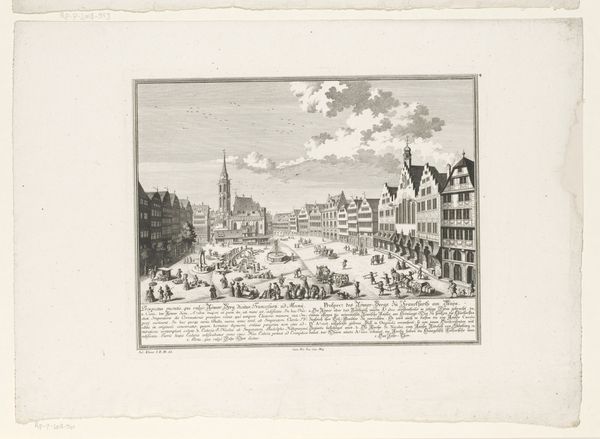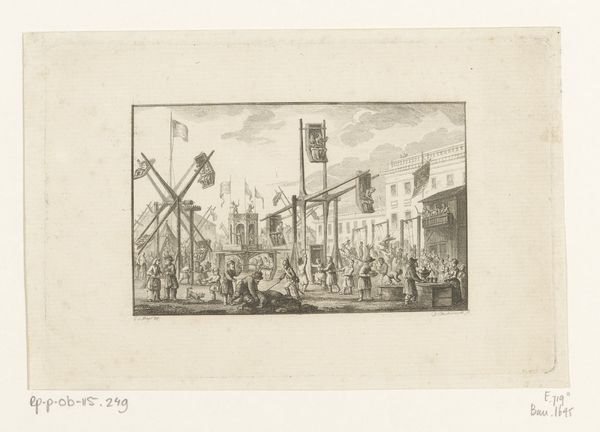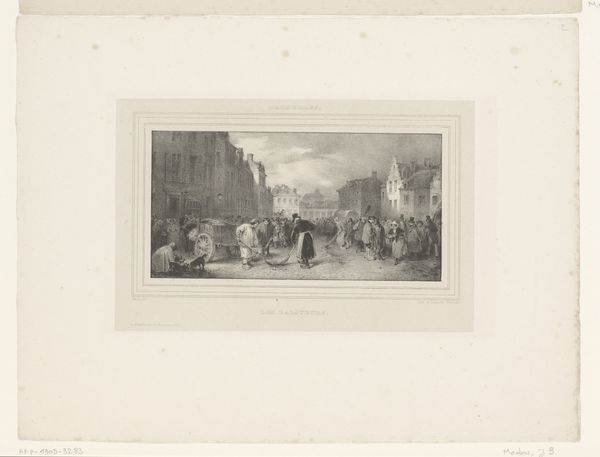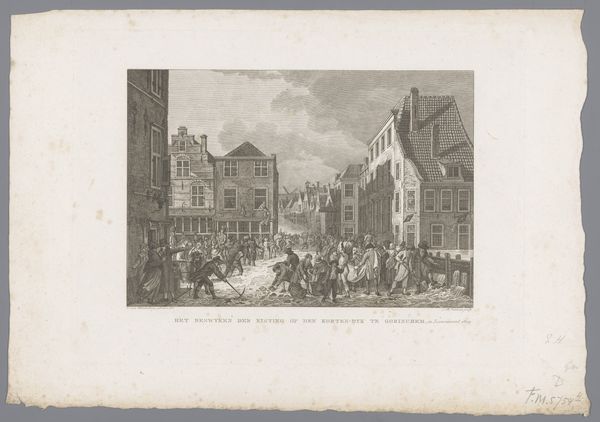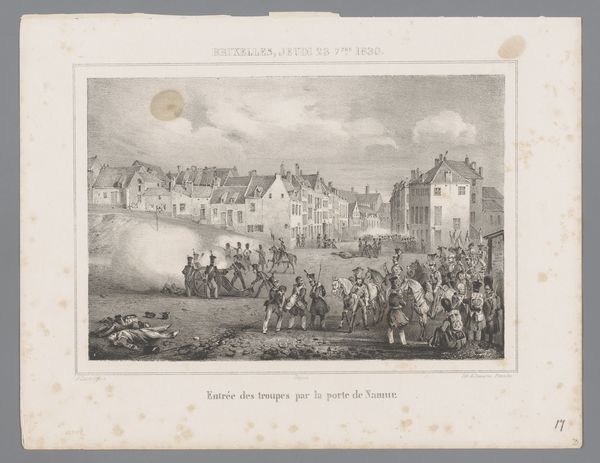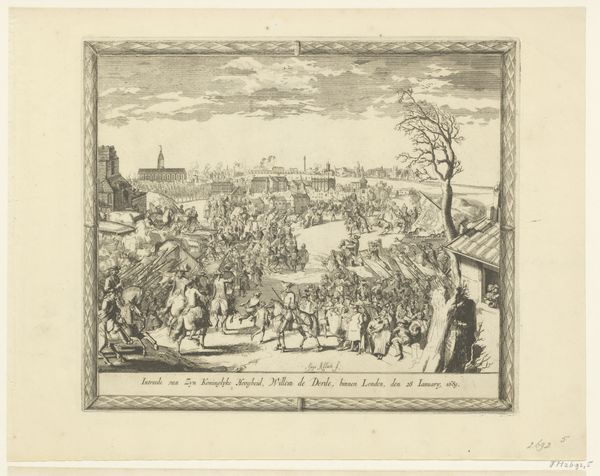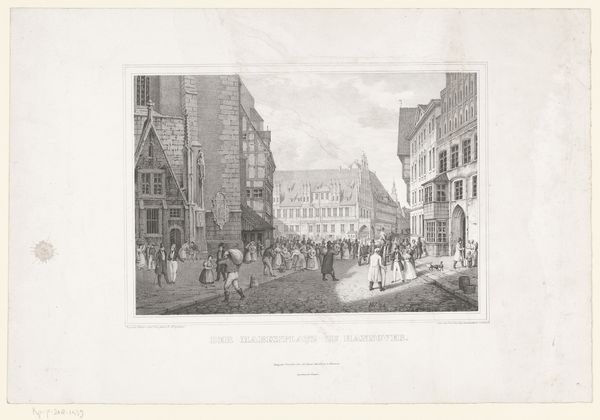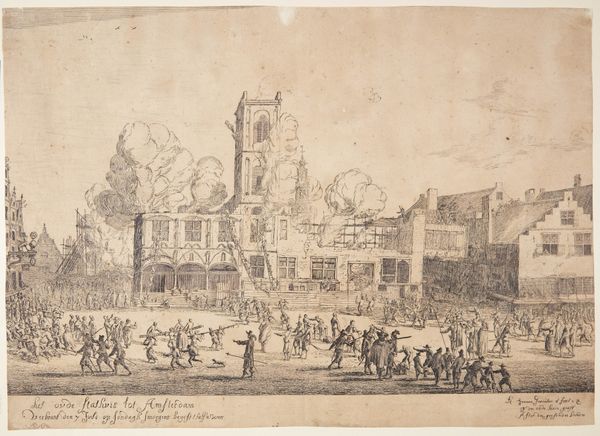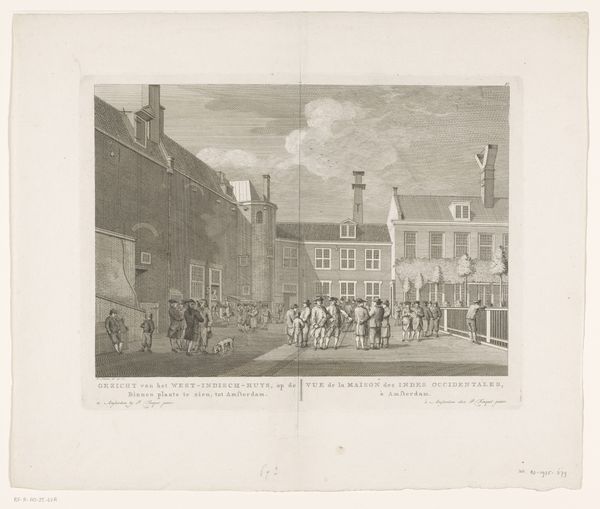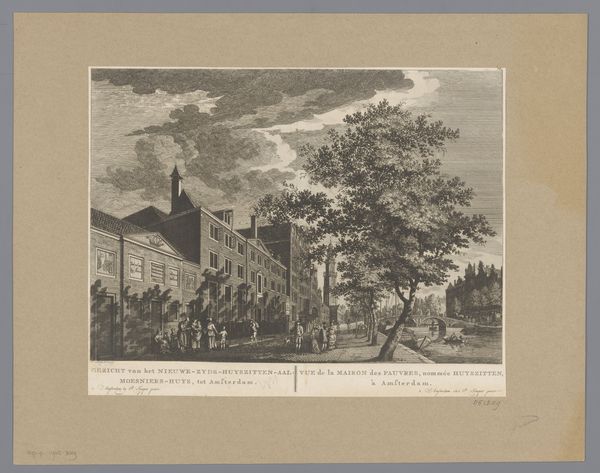
Aanslag op de Gedeputeerden van Dordrecht als zij door de Stadhouderspoort het Binnenhof op rijden, 1786 1786
0:00
0:00
print, etching
#
neoclacissism
#
narrative-art
# print
#
etching
#
etching
#
cityscape
#
history-painting
Dimensions: height 180 mm, width 233 mm
Copyright: Rijks Museum: Open Domain
Curator: This etching from 1786, titled "Aanslag op de Gedeputeerden van Dordrecht als zij door de Stadhouderspoort het Binnenhof op rijden", presents quite a turbulent scene. What are your immediate impressions? Editor: Chaotic is the first word that comes to mind. The greyscale rendering gives it an antiquated feel, and the sheer number of figures packed into the scene creates a sense of agitation. I'm struck by how many bodies seem to be in motion or outright collapsing. Curator: It is certainly a loaded depiction. The print captures an assault on the representatives of Dordrecht. Examining the materials and process here, the fine lines of the etching medium allow for an incredible amount of detail in illustrating the palpable tension. It highlights the labor involved in producing these kinds of historical records for consumption. Editor: Absolutely, but let’s consider that tension further. Beyond just a record, this piece stages a pivotal moment within the Patriot movement of the Netherlands, challenging the authority of the Stadtholder. Look how the artist situates the figures in relation to those buildings—aren’t they dwarfed? Curator: Indeed, and you notice how the buildings become active participants, too? This work underscores the ways urban architecture and social unrest intertwined, transforming everyday locations into backdrops for revolutionary theater. Consider also the socio-economic implications; the consumption of this image as both documentation and, potentially, propaganda... Editor: Propaganda is key. The act of creating and circulating such a visceral image, especially via a readily reproducible medium like etching, points towards constructing a specific narrative and leveraging collective outrage. Who did it serve, and how? I’d wager that this was definitely aimed at stoking resentment of the ruling powers. Curator: It raises compelling questions about the circulation of information and visual representations within periods of political upheaval and how printed images like this contributed to constructing collective identity. I am also considering the labor to create a complex scene like this for print. Editor: For sure, we must question its legacy, and whether it promotes a nuanced view of historical complexities. Examining art history is like holding a mirror up to ourselves and questioning which narratives still dominate. Curator: Well said! It prompts us to ask critical questions not only of the past, but our contemporary moment as well.
Comments
No comments
Be the first to comment and join the conversation on the ultimate creative platform.
